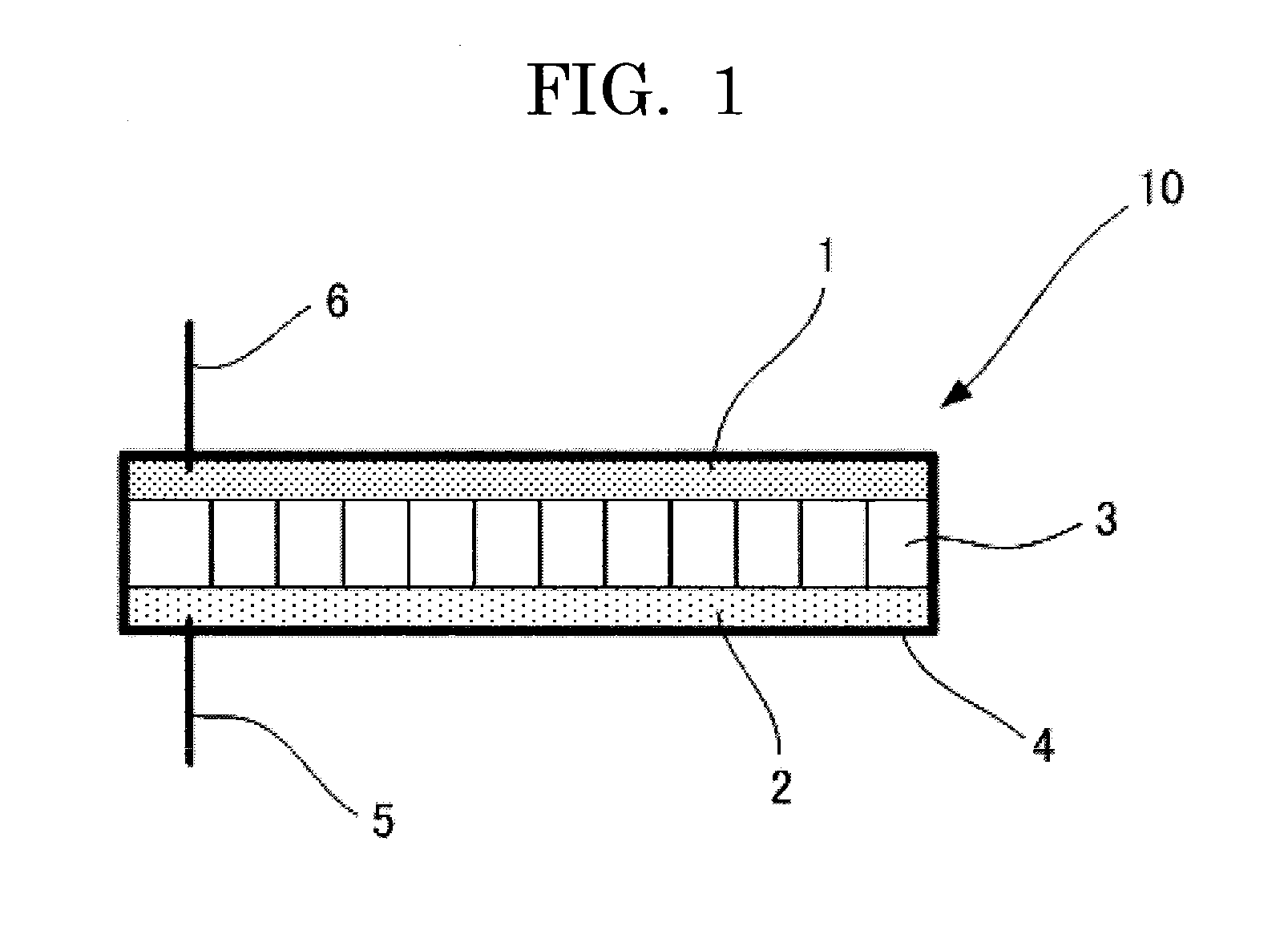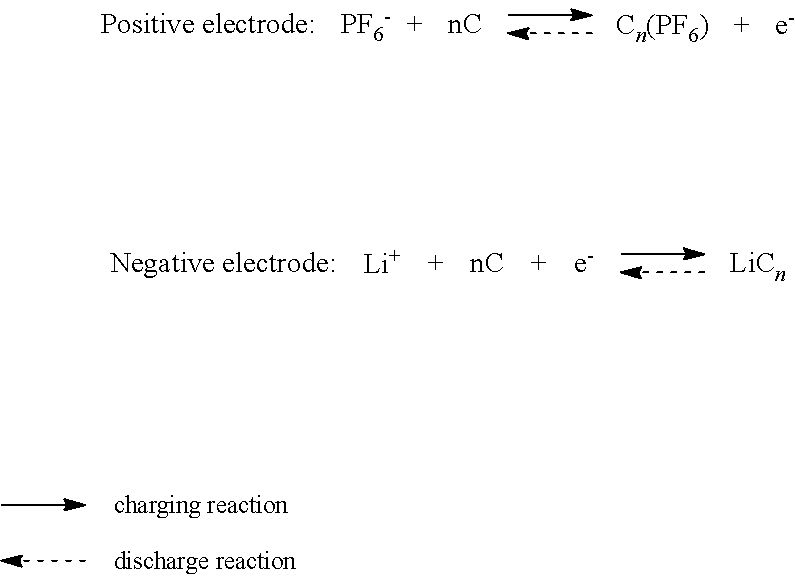Nonaqueous electrolyte secondary battery
a secondary battery and electrolyte technology, applied in the direction of batteries, sustainable manufacturing/processing, cell components, etc., can solve the problems of difficult assembling of batteries and difficulty in increasing and achieve easy assembling of batteries, high discharge capacity, and improved energy density per unit weight of batteries
- Summary
- Abstract
- Description
- Claims
- Application Information
AI Technical Summary
Benefits of technology
Problems solved by technology
Method used
Image
Examples
example 1
[0107]A semi-open cell type nonaqueous electrolyte secondary battery of Example 1 was produced in the same manner as in Comparative Example 1, provided that the positive electrode produced in the following manner was used as a positive electrode.
[0108]To a mixture of 10 mg of a carbon powder (KS-6, manufactured by TIMCAL Ltd.), which was identical to the one used in Comparative Example 1, 200 mg of a solid LiPF6 powder, 2.5 mg of a binder (PVDF, manufactured by KUREHA CORPORATION), and 30 mg of an electroconductive agent (contents: 95% by mass of acetylene black, and 5% by mass of polytetrafluoroethylene), 5 mL of ethanol was added, and the resulting mixture was kneaded. The resultant was pressure bonded to a stainless steel mesh, followed by drying at 200° C. for 4 hours, to thereby prepare a positive electrode. A mass of the carbon powder (black lead) in the positive electrode pressure bonded to the stainless steel mesh was 10 mg.
example 2
[0109]A semi-open cell type nonaqueous electrolyte secondary battery of Example 2 was produced in the same manner as in Comparative Example 1, provided that the negative electrode produced in the following manner as used as a negative electrode.
[0110]To a mixture of 10 mg of a carbon powder (MAGD, manufactured by Hitachi Chemical Co., Ltd.), which was identical to the one used in Comparative Example 1, 4 mg of a binder (a 20% by mass N-methylpyrrolidone (NMP) solution of polyvinylidene fluoride, product name: KF Polymer, manufactured by KUREHA CORPORATION), and 200 mg of a solid LiPF6 powder, 5 mL of ethanol was added, and the resulting mixture was kneaded. The resultant was pressure bonded to a stainless steel mesh, followed by drying at 200° C. for 4 hours, to thereby prepare a negative electrode. A mass of the carbon powder (black lead) in the negative electrode pressure bonded to the stainless steel mesh is 10 mg.
example 3
[0111]A semi-open cell type nonaqueous electrolyte secondary battery of Example 3 was produced in the same manner as in Comparative Example 1, provided that the separator produced in the following manner was used as a separator.
[0112]Onto laboratory filter paper (ADVANTEC GA-100 GLASS FIBER FILTER), which was identical to the one used in Comparative Example 1, 200 mg of a solid LiPF6 powder was applied and pressure bonded. The resultant was used as a separator.
PUM
| Property | Measurement | Unit |
|---|---|---|
| discharge voltage | aaaaa | aaaaa |
| discharge voltage | aaaaa | aaaaa |
| BET specific surface area | aaaaa | aaaaa |
Abstract
Description
Claims
Application Information
 Login to View More
Login to View More - R&D
- Intellectual Property
- Life Sciences
- Materials
- Tech Scout
- Unparalleled Data Quality
- Higher Quality Content
- 60% Fewer Hallucinations
Browse by: Latest US Patents, China's latest patents, Technical Efficacy Thesaurus, Application Domain, Technology Topic, Popular Technical Reports.
© 2025 PatSnap. All rights reserved.Legal|Privacy policy|Modern Slavery Act Transparency Statement|Sitemap|About US| Contact US: help@patsnap.com



